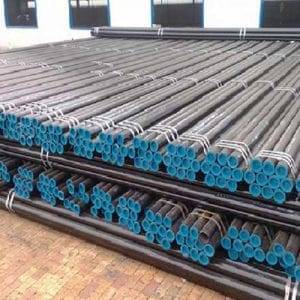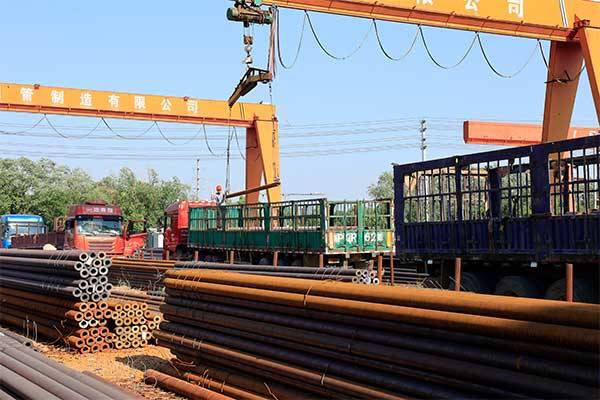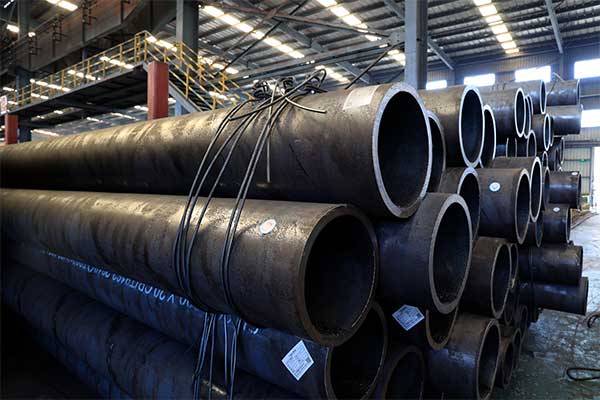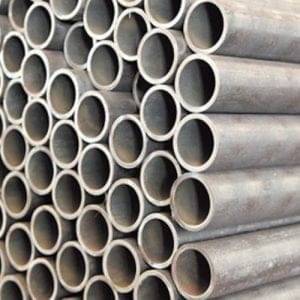Introduction

Structural steel pipe is a fundamental component in modern construction, renowned for its strength, versatility, and durability. As a crucial element in building frameworks, infrastructure, and various industrial applications, its role in contemporary construction projects is indispensable. This blog explores the multifaceted applications, key characteristics, benefits, and sustainability aspects of structural steel pipe, providing insights into its pivotal role in shaping the built environment.
The Evolution of Structural Steel Pipe
The evolution of structural steel pipe has been marked by advancements in metallurgy, manufacturing processes, and engineering design. Originally used primarily in building frameworks, steel pipe has undergone significant developments to meet the growing demands of diverse construction applications. Modern manufacturing techniques have enhanced its strength, corrosion resistance, and fabrication capabilities, expanding its utility beyond traditional uses. This evolution has enabled engineers and architects to innovate and incorporate structural steel pipe into complex and ambitious projects worldwide.
Key Characteristics of Structural Steel Pipe
Structural steel pipe exhibits several key characteristics that distinguish it as a preferred material in construction:
- High Strength-to-Weight Ratio: Steel pipe provides exceptional strength relative to its weight, allowing for lighter structures without compromising structural integrity.
- Corrosion Resistance: Coatings and alloy compositions enhance steel pipe’s resistance to corrosion, prolonging its lifespan in harsh environments.
- Ease of Fabrication: Steel pipe is highly malleable and can be customized to specific project requirements, facilitating efficient construction processes.
- Recyclability: Steel is one of the most recycled materials globally, supporting sustainable construction practices and reducing environmental impact.
Applications of Structural Steel Pipe
The versatility of structural steel pipe enables its application across various sectors:
- Building Construction: Steel pipe serves as a primary material for structural frameworks, supporting skyscrapers, residential buildings, and industrial facilities. Its flexibility allows for intricate designs and efficient load-bearing capabilities.
- Infrastructure Development: In civil engineering, steel pipe is essential for constructing bridges, tunnels, and roadways. Its high load-bearing capacity and durability make it ideal for withstanding heavy traffic and environmental stresses.
- Oil and Gas Industry: Steel pipe forms the backbone of pipelines used for transporting oil, gas, and other fluids over long distances. Its robustness and resistance to corrosion ensure reliable performance in challenging operational environments.
- Industrial Applications: Steel pipe is integral to manufacturing plants, warehouses, and storage facilities, providing structural support for equipment and inventory. Its adaptability allows for the creation of expansive and efficient industrial spaces.
- Architectural Design: In architecture, steel pipe offers both functional and aesthetic benefits, enabling the creation of iconic structures and innovative building designs. Its sleek profile and ability to span large distances contribute to the visual appeal and structural integrity of modern architectural landmarks.
Case Studies and Examples
Examining successful projects highlights the effectiveness of structural steel pipe in achieving diverse design objectives:
- The Burj Khalifa: This iconic skyscraper in Dubai incorporates extensive use of structural steel pipe for its towering framework, demonstrating the material’s capability to support unprecedented heights and architectural innovation.
- Golden Gate Bridge: Steel pipe plays a crucial role in the construction of the Golden Gate Bridge, ensuring structural integrity and resilience against seismic activity and maritime conditions.
- Keystone XL Pipeline: This extensive pipeline project relies on structural steel pipe to transport oil across North America, showcasing its reliability and efficiency in critical infrastructure projects.
Benefits of Structural Steel Pipe
The benefits of structural steel pipe contribute to its widespread adoption in construction:
- Durability and Longevity: Steel pipe’s inherent strength and resistance to corrosion ensure longevity, reducing maintenance costs over its lifecycle.
- Cost-Effectiveness: Despite initial investment costs, steel pipe’s durability and minimal maintenance requirements result in long-term cost savings.
- Sustainability: Steel’s recyclability and minimal environmental impact make it a sustainable choice for green building certifications and projects aiming to reduce carbon footprints.
- Design Flexibility: Steel pipe’s versatility allows for creative and efficient design solutions, accommodating complex architectural and engineering requirements with ease.
Example Applications of Structural Steel Pipe
| Application | Description |
|---|---|
| Skyscraper Construction | Steel pipe serves as the primary material for the framework of tall buildings, providing strength and flexibility in design. |
| Bridge Construction | Used for bridge supports and spans, steel pipe ensures durability and load-bearing capacity over long distances. |
| Oil and Gas Pipelines | Essential for transporting oil, gas, and other fluids efficiently and securely across vast distances. |
| Industrial Facilities | Provides structural support for manufacturing plants, warehouses, and storage facilities, accommodating heavy equipment and inventory. |
| Architectural Features | Incorporates into architectural designs for aesthetic appeal and functional integrity, contributing to iconic structures worldwide. |
Environmental Impact and Sustainability

Structural steel pipe contributes to sustainable construction practices:
- Recyclability: Steel is highly recyclable, with recycled content used in new construction projects, reducing reliance on virgin materials and minimizing waste.
- Energy Efficiency: Steel production processes continue to improve energy efficiency and reduce greenhouse gas emissions, aligning with global efforts to mitigate climate change.
- Life Cycle Assessment: Life cycle assessments demonstrate steel pipe’s environmental benefits compared to alternative materials, reinforcing its role in sustainable construction practices.
Conclusion
In conclusion, structural steel pipe plays a pivotal role in modern construction, offering unmatched strength, versatility, and sustainability. Its applications span diverse sectors, from towering skyscrapers and intricate bridges to essential pipelines and industrial facilities. As technological advancements and environmental considerations continue to shape the construction industry, structural steel pipe remains at the forefront of innovation, enabling engineers and architects to realize ambitious design concepts while adhering to sustainable building practices. Embracing the benefits of structural steel pipe ensures resilient and efficient infrastructure for generations to come.
FAQ
Q:What are the different types of coatings used for structural steel pipe?
A:Coatings such as epoxy, zinc, and polyethylene are commonly used to enhance corrosion resistance and extend the lifespan of structural steel pipe.
Q:How does structural steel pipe compare to concrete in construction applications?
A:Steel pipe offers greater strength-to-weight ratio and versatility compared to concrete, allowing for lighter structures and more efficient construction processes.
Q:What are the considerations when specifying structural steel pipe for a project?
A:Factors include load requirements, environmental conditions, corrosion protection needs, and compliance with building codes and standards.
Q:What are the challenges associated with welding structural steel pipe?
A:Challenges include ensuring proper weld integrity, managing heat distortion, and complying with welding standards to maintain structural integrity.
Q:How does structural steel pipe contribute to LEED certification in green building projects?
A:Steel’s recyclability, durability, and energy efficiency contribute to LEED points in categories such as Materials and Resources and Energy and Atmosphere, supporting sustainable building practices.



